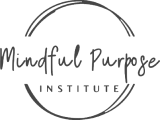Tarot as Therapy: Using the Cards for Insight, Not Prediction

Let’s clear something up: tarot isn’t about fortune-telling.
It’s not about crystal balls, spooky predictions, or telling you when you’ll meet your soulmate (though wouldn’t that be nice? 😉).
At its core, tarot is a tool for self-reflection. It can help you process emotions, understand patterns, and make sense of what’s going on beneath the surface—kind of like therapy, but with cards.
In this blog, we’ll explore how tarot can support your mental health, give you insight into your inner world, and help you feel more grounded and empowered.
What Is Tarot, Really?
Tarot is a symbolic system of 78 cards used for personal guidance and intuitive insight. Each card holds archetypal meaning—stories of challenge, growth, transition, and transformation.
At MPI, we teach that tarot is not about prediction… it’s about perspective.
When you pull a card, you're not asking for your future—you're asking for clarity on what you're navigating right now. It helps you name your feelings, access your intuition, and hold space for your own healing.
How Tarot Supports Mental Health
Tarot can be a grounding, reflective practice—especially when you're feeling overwhelmed, anxious, or unsure of what you're feeling.
Here’s how tarot functions like a mental health ally:
Self-Reflection: Tarot helps bring subconscious thoughts into conscious awareness so you can process them intentionally.
Emotional Regulation: Naming what you're feeling (even symbolically) helps ease mental clutter and emotional overload.
Pattern Recognition: Seeing recurring cards or themes can help you notice the stories or habits you’re stuck in.
Spiritual Encouragement: Sometimes, you just need a little cosmic reassurance—and tarot delivers.
Tarot won’t “fix” anything, but it can give you the insight and emotional space to approach life more intentionally.
Try This: A Gentle 1-Card Tarot Ritual for Clarity
You don’t need to be a pro to start. Try this simple practice next time you're feeling off:
-
Get still. Light a candle. Take three deep breaths.
-
Ask a question. Try: What do I need to understand about my emotions right now?
-
Pull one card. Sit with the imagery. What feelings come up? What stands out?
-
Journal your thoughts. Don’t Google meanings right away—start with your own intuition first.
Over time, you’ll start to notice how the cards mirror your inner world—and how much wisdom you already carry.
Spiritual Tie-In: Tarot and the Third Eye
In yogic philosophy, Ajna—the Third Eye Chakra—is the center of insight and inner knowing. Tarot is one way we strengthen this intuitive connection.
When you read the cards, you’re not asking for answers “out there”—you’re turning inward. You’re learning to trust your inner voice. You’re making meaning from within.
That’s the heart of spiritual growth.
Want to Learn How to Read Tarot with Confidence?
We’ve helped hundreds of students unlock their intuitive gifts through our Tarot Certification Program—whether for personal use or professional practice.
You’ll learn to read cards with clarity, confidence, and integrity—while deepening your own spiritual practice along the way.
🔗 Explore the Tarot Certification
Whether you’re working through a big decision, a season of burnout, or just trying to hear yourself again—tarot can be a soft place to land.
It’s not magic. It’s you—meeting yourself in the mirror and remembering your own power.
So if you’ve been curious, let this be your invitation: pull a card, take a breath, and listen inward.
You already have the answers. The cards just help you hear them.













